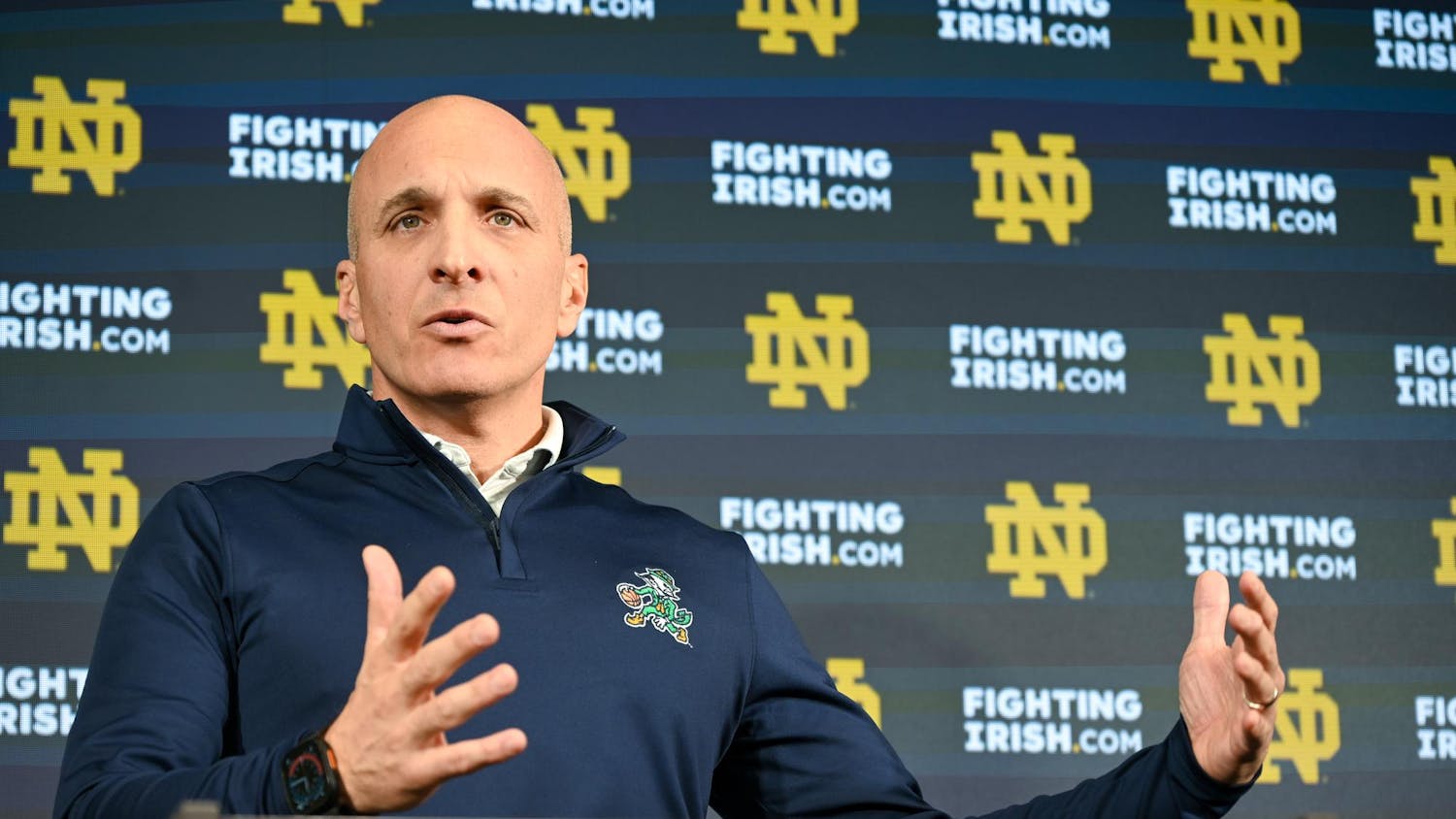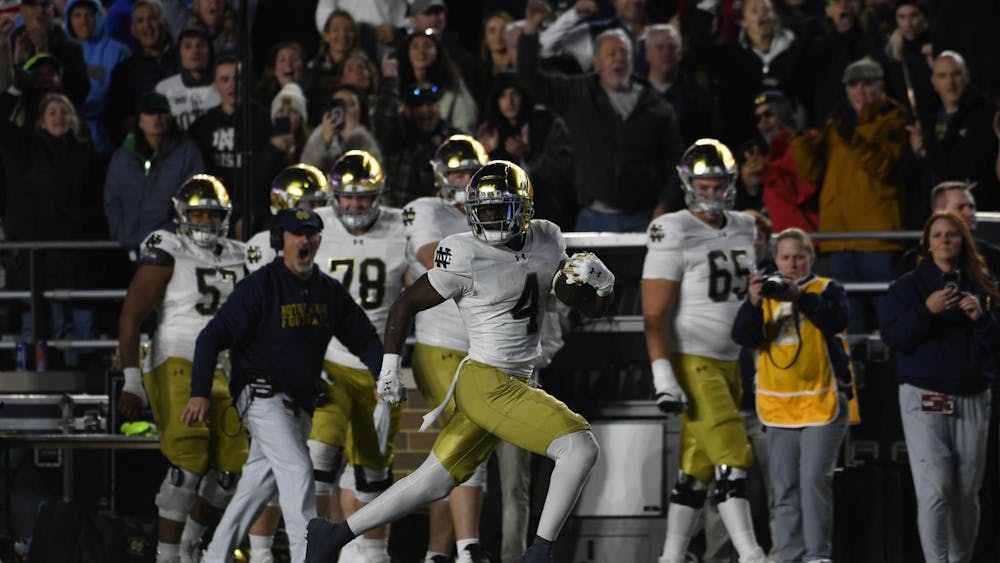“Did you play a sport in high school?”
This question, along with queries about the number of siblings and career ambitions, comprises the usual second-tier “get to know you” questions here at Notre Dame. It requires more details than the basic name, dorm and major stats, but it’s less intimate than the “fears, hopes and dreams” talk.
But this question has never been one that I can answer easily.
Depending on your perspective, in high school I might have been a varsity athlete who trained several hours a day. I spent four football seasons practicing at least three days a week, balancing academic commitments and debating the merits of artificial turf versus grass fields.
Depending on your perspective, in high school I might have been an artist who spent hours perfecting my craft. I spent four years rehearsing at least three days a week, balancing academic commitments and debating the merits of matte lipstick versus lipgloss.
See, the problem is that in high school, I was a proud member of the Chapellette Dance Team. For four years, I performed in field shows at football games, competed in national dance team competitions and marched in many miles of Mardi Gras parades. And in our current culture, sports and art are viewed as binary opposites. I’d like to propose, though, that sports and arts are not in opposition, but on a continuum, and dance falls somewhere in the middle.
Success in tap, ballet or jazz requires physical stamina, sustained commitment, a smattering of luck and more than a little assistance from genetics — no different from success in football, basketball or lacrosse. A quarterback who throws a touchdown pass spiraling to a receiver in the corner of the end zone demonstrates the same timing and precision required from a ballerina about to perform a series of fouettes.
To draw on the criteria developed earlier this semester by my esteemed colleagues Marek Mazurek and Zach Klonsinski, in their debate over esports counting as real sports, dance performs quite satisfactorily.
Klonsinksi argues that the crux of the debate hinges on “establishing how much physical ‘effort’ or ‘exertion’ should be required for something to be considered a sport.” I think the aching hamstrings after a day rehearsing a kick dance, as well as my strained PCL (which still aches when the weather changes) corroborates the physical demands of dancing. The elevated heart rate after hours of dance rehearsal is no different from the elevated heart rate after hours of tennis practice.
Mazurek counters that esports are sports simply because ESPN picked them up, saying “[a]nd right now the money is flowing into esports both in America and around the world.” Well, ESPN has aired the UDA National Dance Team Championship for the last several years. Furthermore, television shows featuring dance, such as Fox’s So You Think You Can Dance?, have been financially successful endeavors for major networks. To put it crassly, dance can be commodified and commercialized just as much as football or basketball.
I acknowledge that dance has many more subjective elements than what are traditionally considered to be sports, but so do gymnastics and figure skating — both of which are recognized as sports by the Olympics. I’m not saying that ballet or jazz are the same as football and basketball, but these activities are more similar than different. Dance doesn’t threaten sports; sports don’t threaten dance. You can wear a varsity letter and ballet slippers at the same time.
Read More
Trending








